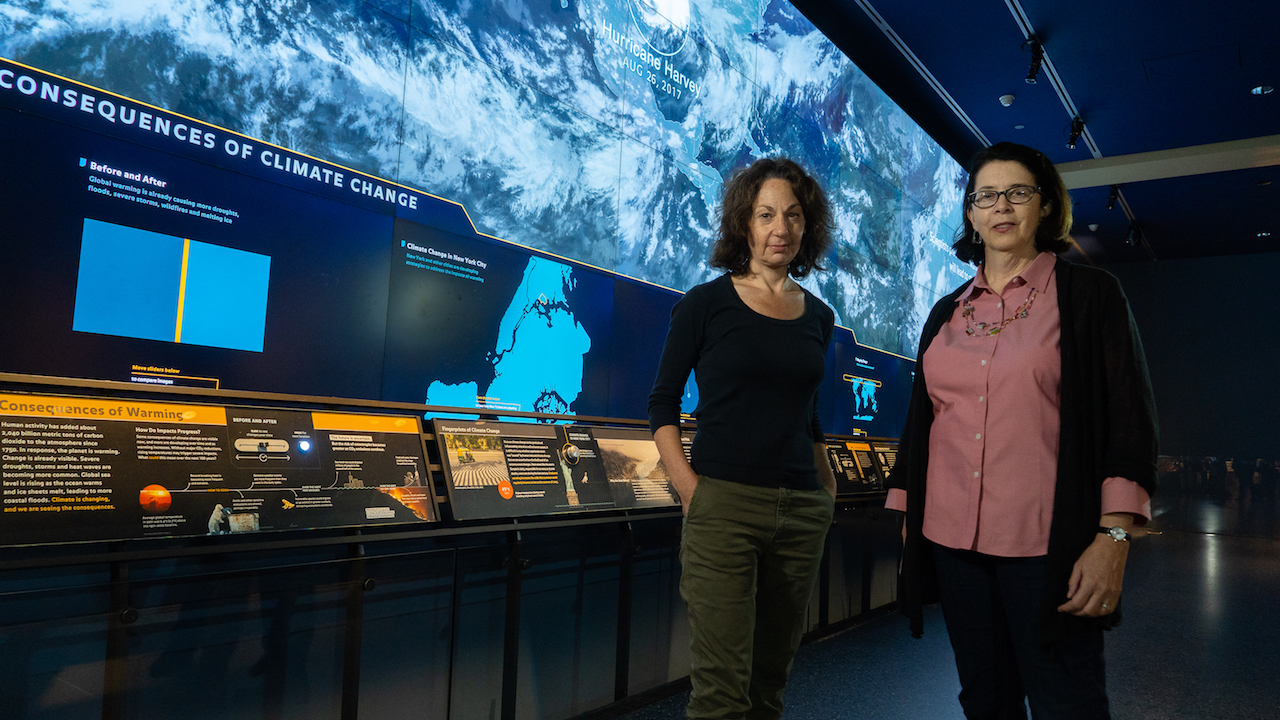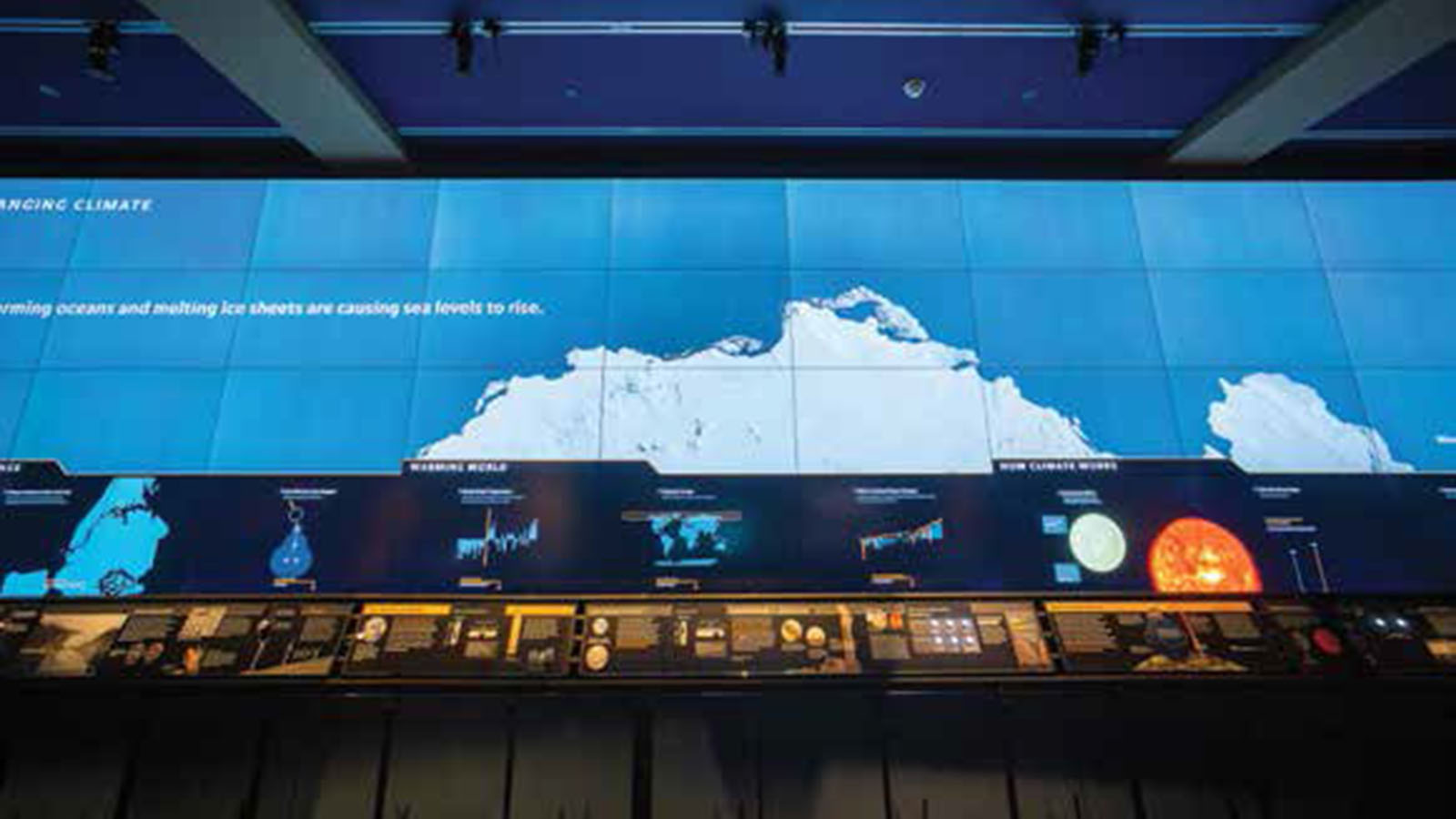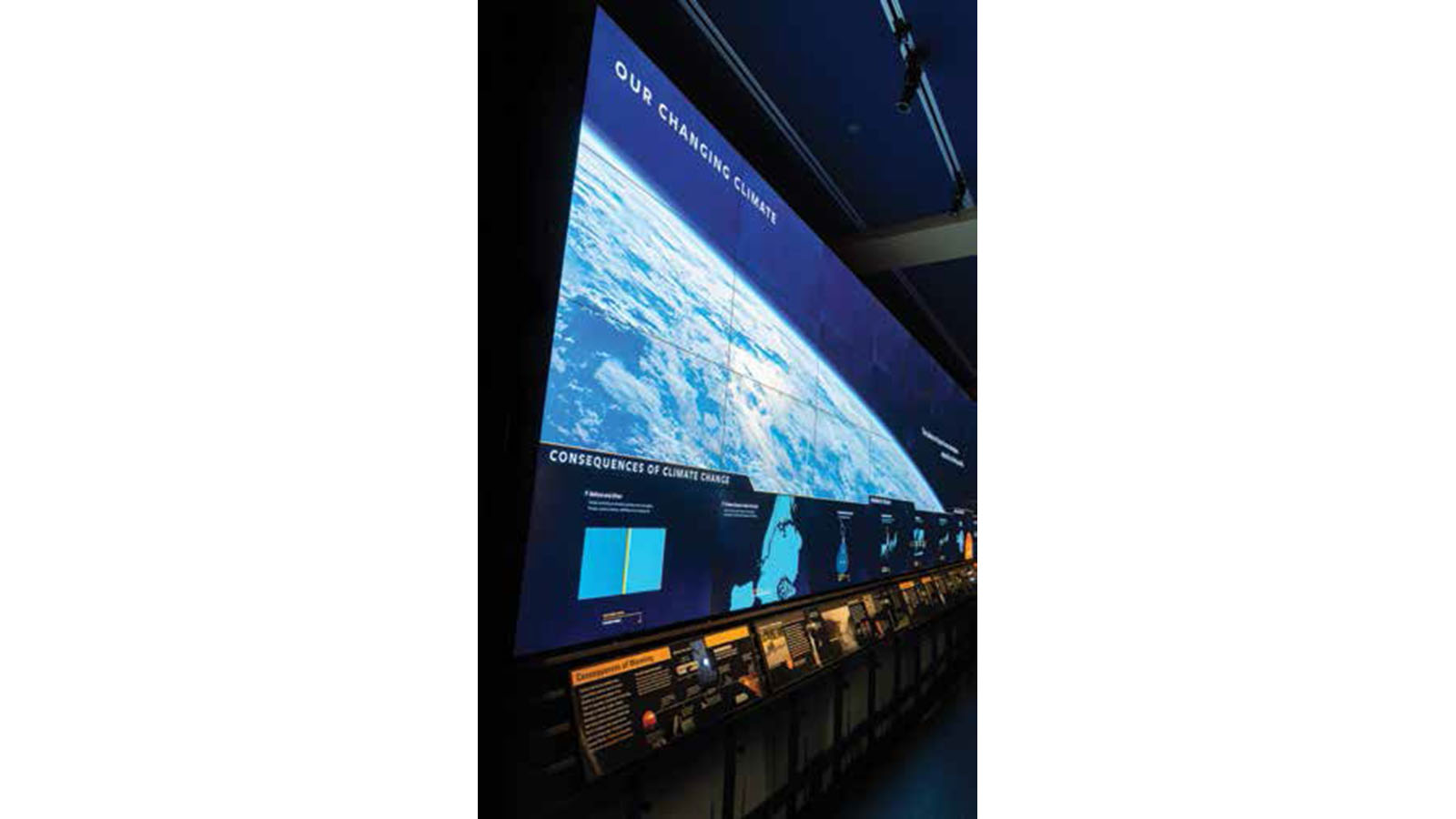Wonder can rouse the senses, but can it change the world? In The Passions of the Soul, René Descartes extols the virtues of wonder, arguing that new ways of seeing can inspire awe. “When our first encounter with some object takes us by surprise,” he writes, “and we judge it to be new, or very different from what we have previously experienced or from what we expected it to be, this causes us to wonder at it and be astonished.”

Museums are spaces where inquiry lives, wonder takes root, and information is shared. We also rely on museums for trusted data and ways to contextualize that data. In this edifying spirit, the American Museum of Natural History in New York City has updated its Climate Change exhibit in the David S. and Ruth L. Gottesman Hall of Planet Earth. The exhibit’s new elements, which have been in planning and development since 2016, draw on extensive research. At the heart of the installation is an interactive, content-rich media wall that lets visitors engage with the scientific evidence of climate change. Visualized data, high-resolution imagery, animations, text, and graphics help tell this evolving story.
EVIDENCE-BASED UNDERSTANDING
“One of the greatest current threats to life on Earth is climate change, which has largely been induced by human activity,” said Ellen V. Futter, president of the American Museum of Natural History, stated in a release. “And one of the most important responsibilities of the museum is to present the scientific topics of our times to the public in ways that are comprehensible, accessible, and engaging. At the same time, misinformation about climate change has become widespread and the museum’s role in fostering greater knowledge and evidence-based understanding is more urgent than ever.”
EDUCATIONAL AND INTERACTIVE
According to the museum, The Gottesman Hall of Planet Earth is one of the most popular museum exhibition halls for teachers and school groups, from pre-kindergarten through college. It also serves as a learning lab for graduate students in the museum’s Master of Arts in teaching with a concentration in Earth science, a program in the Richard Gilder Graduate School.
LCD MEDIA WALL TECHNOLOGY

The new Climate Change section features a 9x4 Barco UniSee LCD media wall comprised of 36 high-definition 55-inch tiled panels with essential messages about climate change. The modular yet bezel-less LCD design gives visitors more viewable space with which to interact, creating a seamless multimedia canvas. The experience is both personalized and shared—viewable close up, in detail, as well as from a distance with “metamessages” boldly designed.
The media wall installation spanned approximately four months, including the demolition of the existing infrastructure and preparation work. Time was also devoted to fine-tuning by the client before the exhibition went live in July of 2018.
NONLINEAR STORYTELLING
The exhibit is also nonlinear in that visitors can approach it from any direction and immediately begin the experience.
Below the content screens are interactive stations based on data from scientists and organizations, including NASA and the National Oceanic Atmospheric Administration, that explore three main themes: “How Climate Works,” “Our Warming World,” and “Consequences of Climate Change.” The wall’s uniformity contributes to the coherence and narrative context of information that can dynamically shift depending on who is operating the interactive stations. The wall is installed in a dimly lit exhibition hall, but the 800cd/m2 luminance and 4,000:1 contrast ratio provide ample brightness.
LAYERING TIME
New technologies are proving to be useful tools for grand and legacy institutions who want to reimagine their roles as society evolves. Apps, learning portals, and virtual and augmented reality solutions are being deployed to enhance the visitor experience. How does the American Museum of Natural History, known for its legendary Tyrannosaurus Rex fossil, beloved dioramas, and artifacts, approach emerging technologies?
Vivian Trakinski, director of science visualization, American Museum of Natural History, sees new technologies as part of an evolving conversation.
“Dioramas now are as much about art as anything else, but when they were introduced to the public, they were about providing the public access to new locations,” Trakinski said, “parts of nature that they otherwise could not access.”
This concept informs how museum professionals approach digital media now, she said, because so much of scientific work depends on digital data, digital artifacts, and specimens. Trakinski believes that digital tools are part of how the next generation of scientists are studying nature, including the climate record.
“People have access to all parts of the world through travel, through films, through television—but we still don’t have natural access to a climate record that expands thousands and millions of years,” she articulated. “Scientists are generating data and visualizing that data in order to explore these dimensions of the natural world. That’s a big part of our strategy.”
She also enthused that the dioramas, adored by many, “are not going anywhere.” Instead, she believes that digital platforms can complement existing artifacts and exhibitions, and the museum is prototyping with AR, VR, and mobile phones to help layer time.
“This is a natural history museum,” Trakinski said. “We want to show not just what we know today about the natural world, but there is an aspect of the history of science that we want to maintain. And so, with these digital layers, we can really give people access to what we understood and how we presented it 150 years ago, and what scientists are actively engaged in today.”
Lauri Halderman, vice president of exhibitions at the American Museum of Natural History, concurred. “As exhibit designers, one of the things we’re always trying to do is find the right medium to tell the story, to tell the message, and to do it in a powerful way,” Halderman stated. “While dioramas were compelling then, and I think they still are now, a big digital display like this is equally powerful in different ways.”
DEFINITIVE DATA
While there is some crosstalk about whom to believe regarding climate change science, Lauri Halderman noted that museums are very trusted sources.
“We know that from public opinion polls [museums are] interestingly more trusted than the government, more trusted than newspapers,” Halderman said. “We’re fortunate that as institutions we have a lot of public trust; we want to use that to everyone’s benefit. We know that people are increasingly interested and want more information, and this exhibit is a way to put the information out in front of people without a lot of intermediaries.”
“The data is the data,” Trakinski said.
“Come see for yourself,” added Halderman. “Come explore it. You learn a lot by spending time with the data.”
THE ART OF CONTENT

Working with the creative teams at the museum was challenging for the AV integration team, said Don Parenta, relationship development manager, IVCi, but it was also a great learning experience.
“Content creation is its own art,” Parenta said. “The creators have specific needs, like color reproduction, for instance. Getting the color pallet over 36 panels is always a challenge with a tiled wall.” Both the AV integrators and the content team were committed to a compelling visualization with no compromise in video quality or legibility.
Museum stakeholders are also strategizing about how and when to update the exhibit content. “We have a few interactives that rely on annual data,” Trakinski said. “You can explore the climate record based on annual data points. Those will be updated every year. The large message area we will definitely update, whether it’s going to be twice a year, four times a year, or when there is something interesting that happens that’s related to climate change. We have the ability to be responsive.”
Once formal evaluations are conducted with visitors, the team will develop a full strategy as to the periodicity and the types of content changes.
LEAD WITH THE EXPERIENCE
For other museum stakeholders looking to bring next-generation AV into their venues, Don Parenta recommends thoroughly vetting available technologies.
“There are many options to consider on the visualization side, and also behind-the-scenes products like wall processors, signal distribution, mounting infrastructure, and more. Understanding the experience you want your visitors and your donors to have is critical. Spend time on mockups. Study the results before pulling the trigger.”
“I love the museum and this particular exhibit about change on the planet,” said Hans Dekeyser, Barco’s VP of sales, enterprise.
Dekeyser appreciates how this exhibit is using data and technology to raise awareness about a critical issue that can help humans and nature “live more seamlessly.” And seamless is the idea word, he said. “This UniSee provides the most ‘seamless’ visual experience for LCD video walls, and Barco is so proud to be a part of it.”
‘WE’RE PART OF THE STORY’
According to the Intergovernmental Panel on Climate Change, “Scientific evidence for warming of the climate system is unequivocal.” Our warming planet is a global problem requiring global solutions. To that end, museum designers and exhibition teams did not spend too much time advocating for individual solutions in this installation. “Yes, people should change their light bulbs, and conserve personal resources. That’s all very important,” said Halderman. “But ‘big picture solutions’ to climate change are what we need—not just individual actions, but thinking politically and voting.” While this is difficult to achieve, the American Museum of Natural history team hopes to “motivate people to become more curious, to become more knowledgeable, and to take that out into the arena of their lives.”
There’s another aspect to climate change that’s communicated by the data and this unique exhibit. “One side of the media wall is modern climate and the other side is about the paleoclimate,” Trakinski said. “We want people to understand that the climate is not fixed. Our climate has always been changing. Our climate evolves. Now we’re part of that system, so we can push it to evolve in one direction or another. There’s nothing fixed about our Earth today. Our climate was not always our climate. There’s a reason why humans evolved when they did, when life began when it did. It’s an ongoing story. We’re part of the story, we’re players in that story, and we want people to feel agency to act accordingly.”
Margot Douaihy is the editor-at-large of AV Technology magazine. She teaches at Franklin Pierce University.
More Info
AMERICAN MUSEUM OF NATURAL HISTORY, NEW YORK CITY
amnh.org
BARCO
barco.com
IVCI
ivci.com
NASA: GLOBAL CLIMATE CHANGE
climate.nasa.gov/evidence
